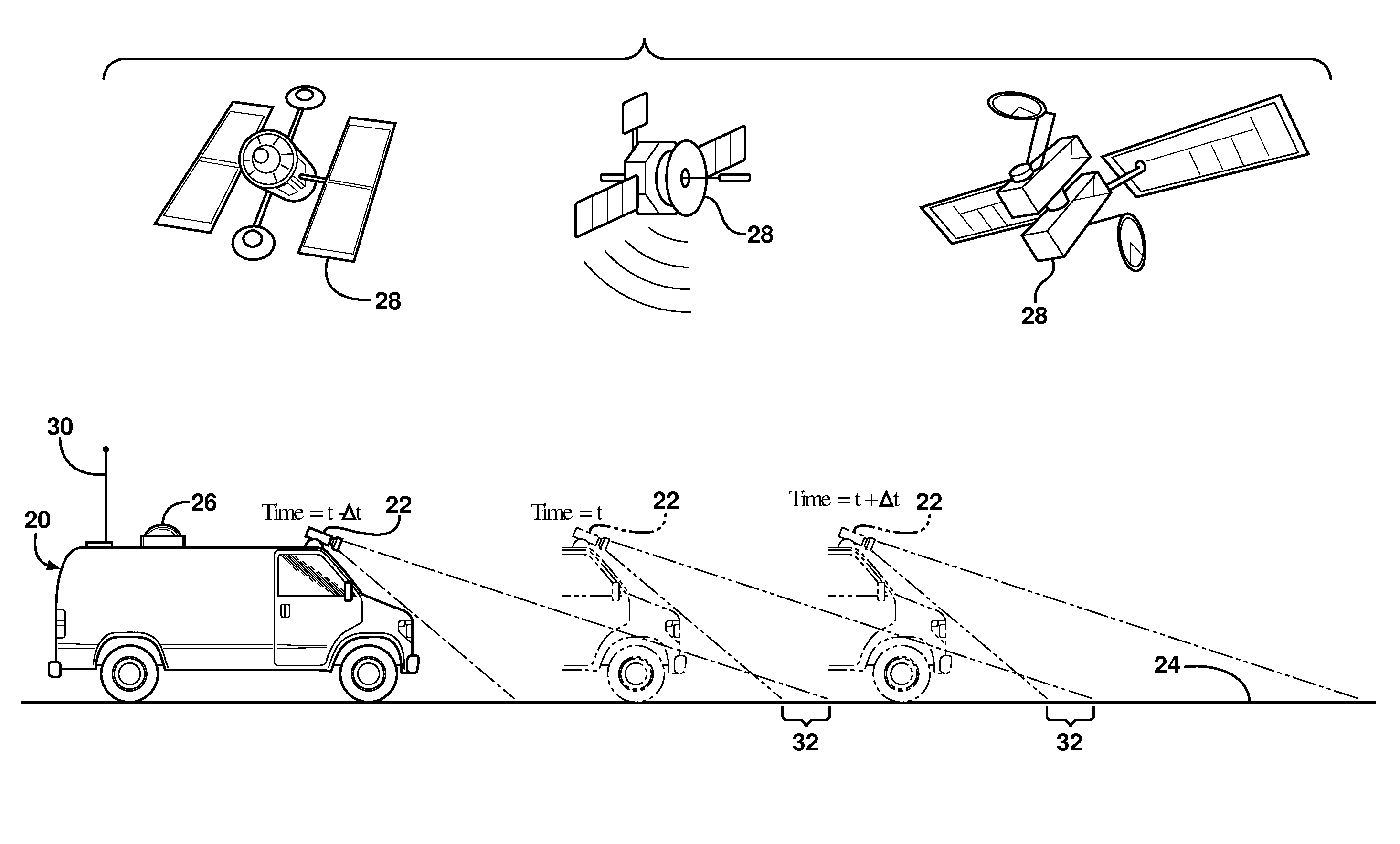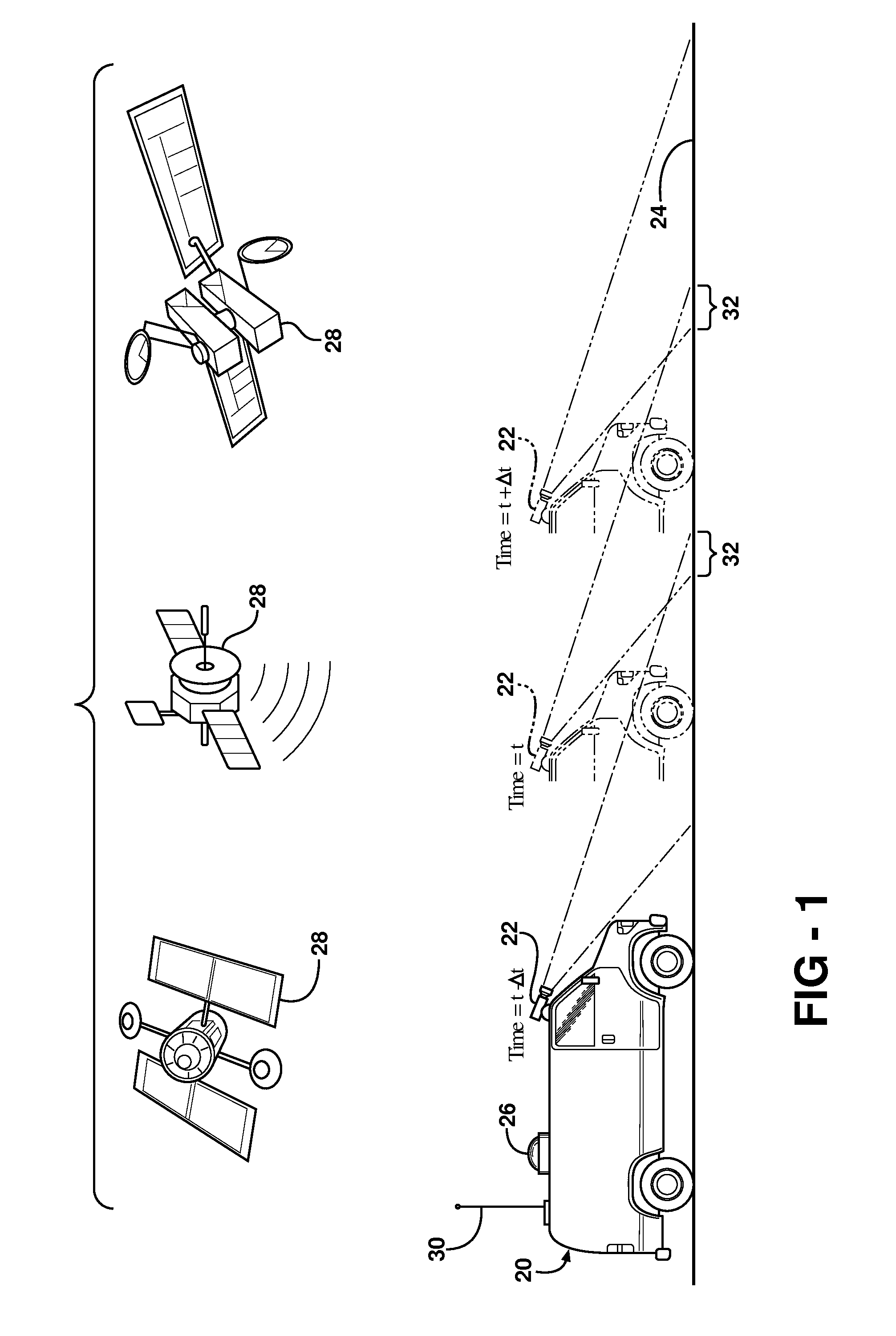Method for creating a mosaic image using masks
a technology of mosaic image and mask, applied in image data processing, character and pattern recognition, instruments, etc., can solve the problems of inaccurate geo-positioning data, aerial images that are not taken exactly perpendicular to the surface of the earth, and inaccuracy of such images up to a dozen meters, so as to achieve greater precision and efficiency.
- Summary
- Abstract
- Description
- Claims
- Application Information
AI Technical Summary
Benefits of technology
Problems solved by technology
Method used
Image
Examples
Embodiment Construction
[0037]Referring to the figures, wherein like numerals indicate like or corresponding parts throughout the several views, a mobile mapping vehicle is generally indicated at 20. The mobile mapping vehicle 20 is preferably, but not necessarily, a land based van or automobile fitted with one or more cameras 22 of the type commonly used in geographic mapping applications. The camera 22 is highly calibrated so that pictures taken of a surface of interest 24, such as a roadway, can be geo-coded with a specific location and orientation. This is accomplished, typically, through a GPS receiver 26 which receives positional data from a plurality of satellites 28 orbiting the Earth. Furthermore, orientation determination equipment, e.g., INS, is represented by feature 30 to provide heading data for each image taken by the camera(s) 22. With these devices, each photographic image taken by a camera 22 is geo-coded, meaning that its position, as computed by the GPS receiver 26 and orientation equip...
PUM
 Login to View More
Login to View More Abstract
Description
Claims
Application Information
 Login to View More
Login to View More - R&D
- Intellectual Property
- Life Sciences
- Materials
- Tech Scout
- Unparalleled Data Quality
- Higher Quality Content
- 60% Fewer Hallucinations
Browse by: Latest US Patents, China's latest patents, Technical Efficacy Thesaurus, Application Domain, Technology Topic, Popular Technical Reports.
© 2025 PatSnap. All rights reserved.Legal|Privacy policy|Modern Slavery Act Transparency Statement|Sitemap|About US| Contact US: help@patsnap.com



